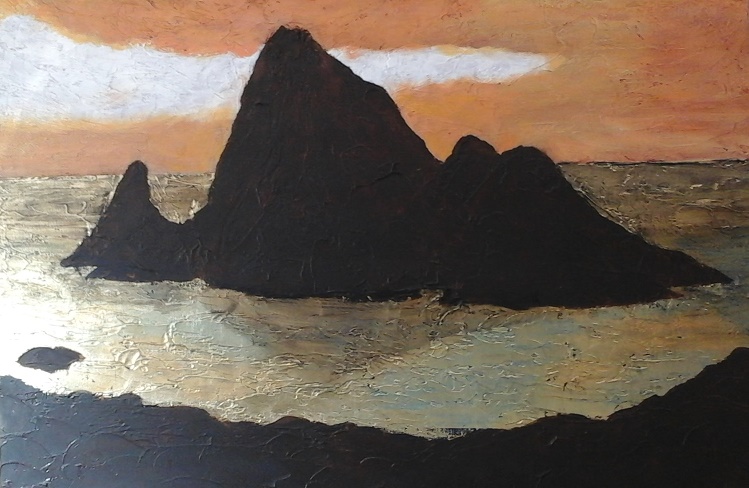Okay, so I'm sitting here at my desk looking at a blank screen with a blank mind and wondering what to write about this week. I've scrolled through the list of lessons on my computer, but nothing is speaking to me. Nothing is jumping up and down yelling "Pick me! Pick me!" Drat! Then it hit me... creative blocks, and not the ones you stack to build castles! We'll play with those another day!
What causes creative blocks? Well, it could be any manner of things... coming down with a cold; pain; worrying about something; lack of good sleep; fear of not being creative; self-doubt about your abilities to get a painting the way you want it... it could be anything, but the result is always the same... nothing gets accomplished.
Far, far away, in another life, I worked as a commercial artist, or as they are called today, graphic designer. In the design industry the rule of thumb is Be Creative, or Be Fired! One quickly learns to develop an arsenal of tricks to defeat creative blocks.
Here are some tricks that artists I know use:
For some people getting together with another artist and comparing notes or paintings over coffee helps. People who have been away from art for a while often find taking a short workshop helps to get them back on track, and often a workshop in a different medium or technique will fire up the creative furnaces.
There are things like doing a tour of local galleries, or a studio tour, to see what's new and exciting; attending product demonstrations at art supply stores; attending artists conferences; joining an organization of artists; trying one of those colouring books based on Zendoodling.
You can also set yourself a goal of producing one piece of art each week, or day or month or per class, and while it may be hard to keep going in the beginning, it will become easier and become a good creative habit after a while.
Did you know that it only takes 28 days for a new habit to become natural and part of your life? So why not do a quick 15 minute sketch everyday? Your skills will improve just from doing it, and your creativity will become available everyday.
The one thing I find most effective is to go out to my studio, not to paint, but to tidy up or organize things. It doesn't take me long to start messing with the materials instead of tidying, and pretty soon I'm right back into making art!
Another thing I do is always play music when I'm in the studio, whether I'm tidying or painting. It is the white background noise that eliminates the sound of cars driving by or the ferry running back and forth across the river. I am not conscious of the music while I'm working, but it does help get me into that creative right brain mode, yet I seriously miss the music if it's not playing when I'm in the studio.
Please let me know how you deal with creative blocks. By commenting on the blog site, you will be able to share your experience with others. Thank you so much!
For creativity inspiring activities... this event is coming up and I recommend it:
Orleans Art Studio Tour / Tournée des ateliers d'art d'Orléans
June 13 & 14, 2015 from 10 AM to 4 PM.
Please join the artists at their opening reception on Wednesday June 10th, 7:00–9:00 p.m. at Wall Space Gallery, 2316 St. Joseph Blvd in Orleans.
For more information: http://www.oast.ca/
Also, coming in July, Michelle Casey, Canadian collage artist, will be doing a guest blog. I'm really looking forward to this as Michelle does amazing work and is going to share some of her highly successful techniques with us.
Today's Painting Tip:
Just paint! It doesn't matter if it's good or bad, just get something on paper, canvas or other surface. Express your creativity to keep it going! Do some quick sketches with any artistic medium. Cut images out of magazines and make a collage. Don't take it all to seriously. There is more to art than "rules", so explore and experiment! And, above all, have fun!
Update on the Painting of Jane's Photograph:
I've started adding colour to the painting, building the sky, the rocks and the water. The sky and rocks start as many of my paintings do... with the darks laid in first. These will lighten as subsequent layers are added. The colour in the water, to maintain the metallic beauty of the gold leaf, is applied in thin layers. Those who have taken my glazing workshops will appreciate the applied use of this technique in conjunction with the gold leaf.
Best wishes,
Susan


 RSS Feed
RSS Feed